Abstract
In this paper we describe how a model of stable isotope fractionation processes, originally developed by H. Craig and L. I. Gordon ([1965] in E Tongiorgi, ed, Proceedings of a Conference on Stable Isotopes in Oceanographic Studies and Paleotemperature, Spoleto, Italy, pp 9-130) for evaporation of water from the ocean, can be applied to leaf transpiration. The original model was modified to account for turbulent conditions in the leaf boundary layer. Experiments were conducted to test the factors influencing the stable isotopic composition of leaf water under controlled environment conditions. At steady state, the observed leaf water isotopic composition was enriched above that of stem water with the extent of the enrichment dependent on the leaf-air vapor pressure difference (VPD) and the isotopic composition of atmospheric water vapor (AWV). The higher the VPD, the larger was the observed heavy isotope content of leaf water. At a constant VPD, leaf water was relatively depleted in heavy isotopes when exposed to AWV with a low heavy isotope composition, and leaf water was relatively enriched in heavy isotopes when exposed to AWV with a large heavy isotope composition. However, the observed heavy isotope composition of leaf water was always less than that predicted by the model. The extent of the discrepancy between the modeled and observed leaf water isotopic composition was a strong linear function of the leaf transpiration rate.
Full text
PDF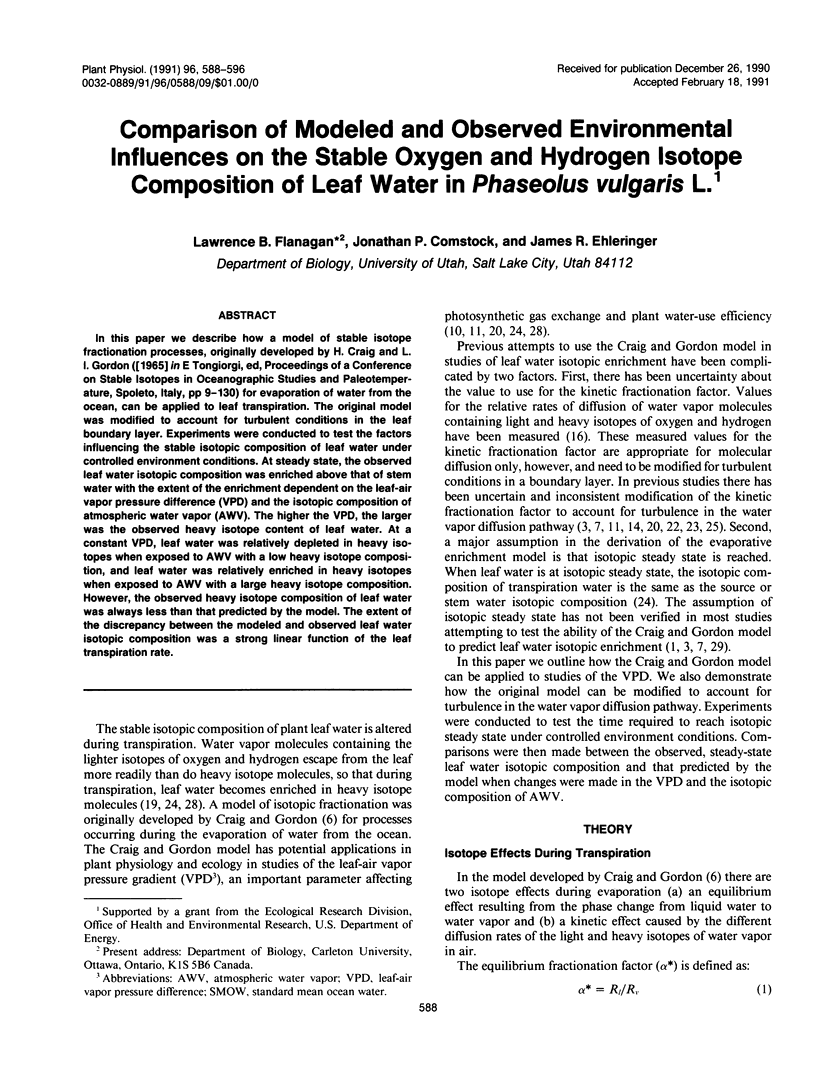
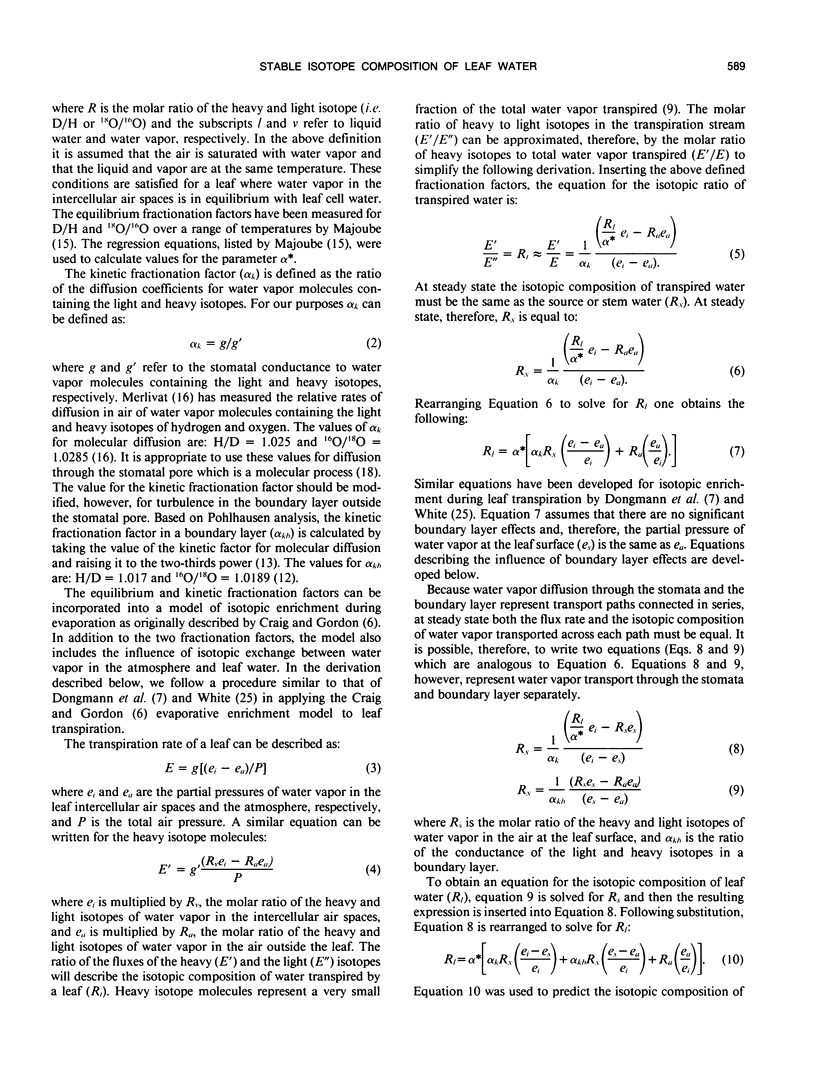
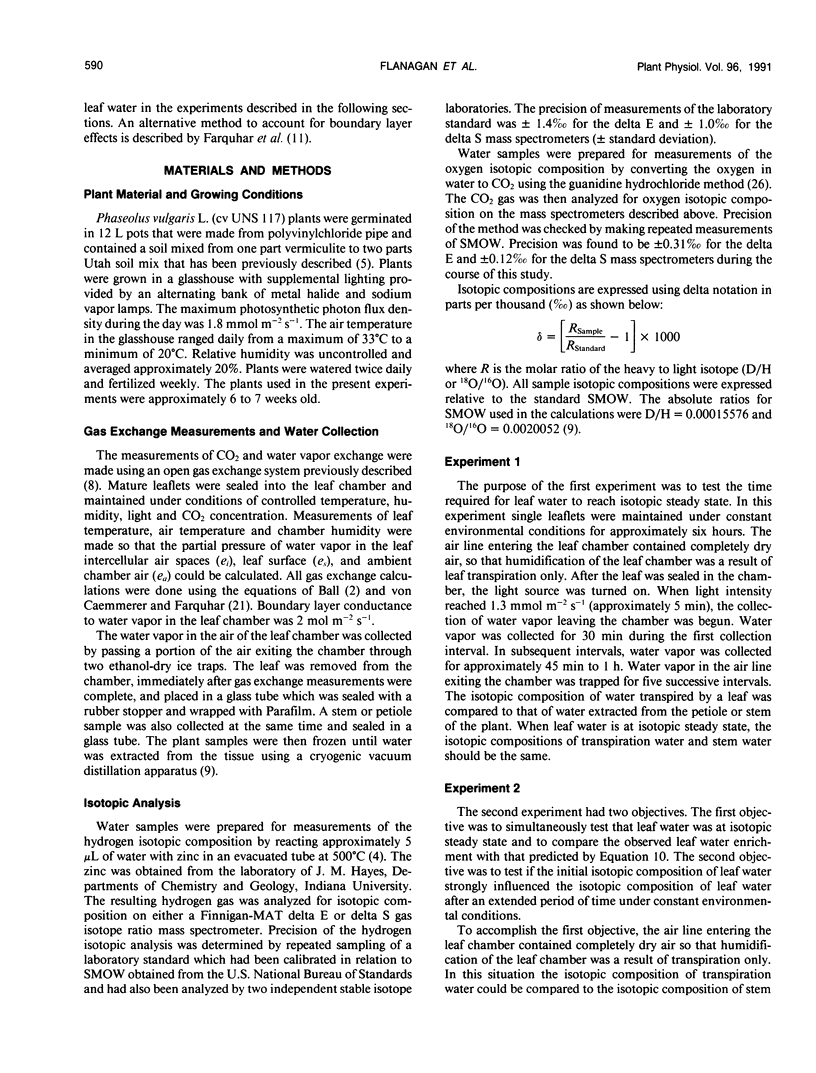
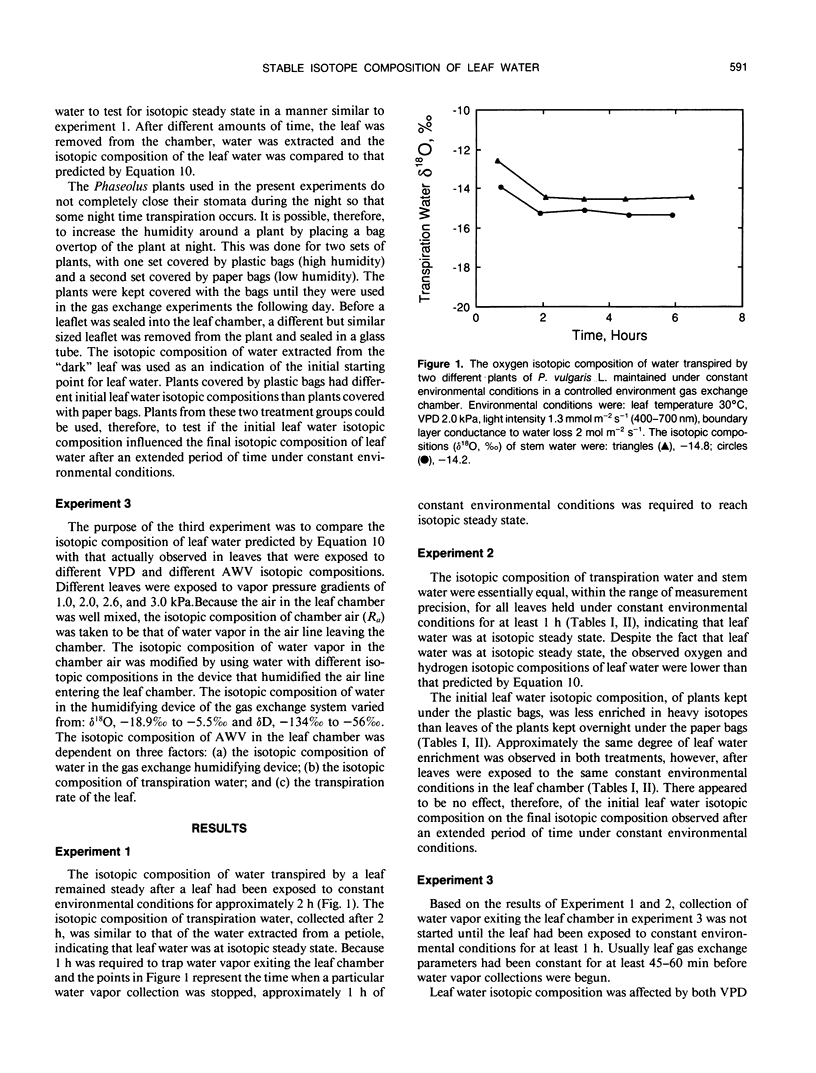
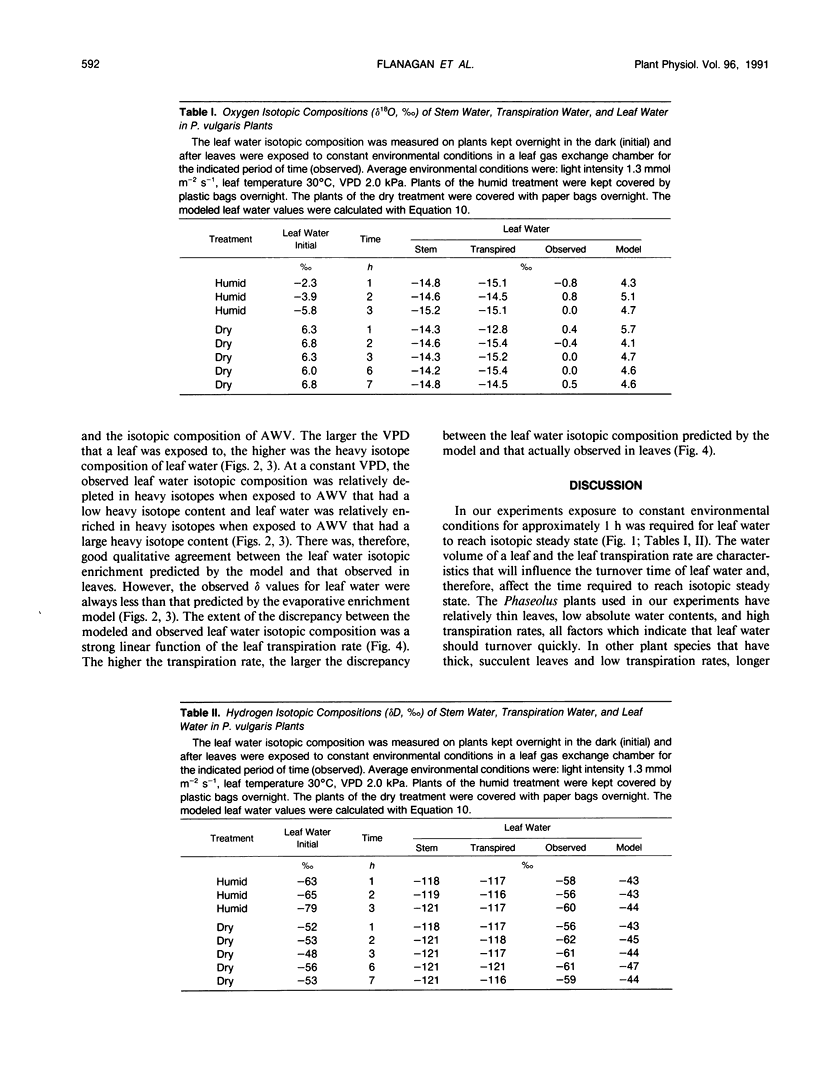
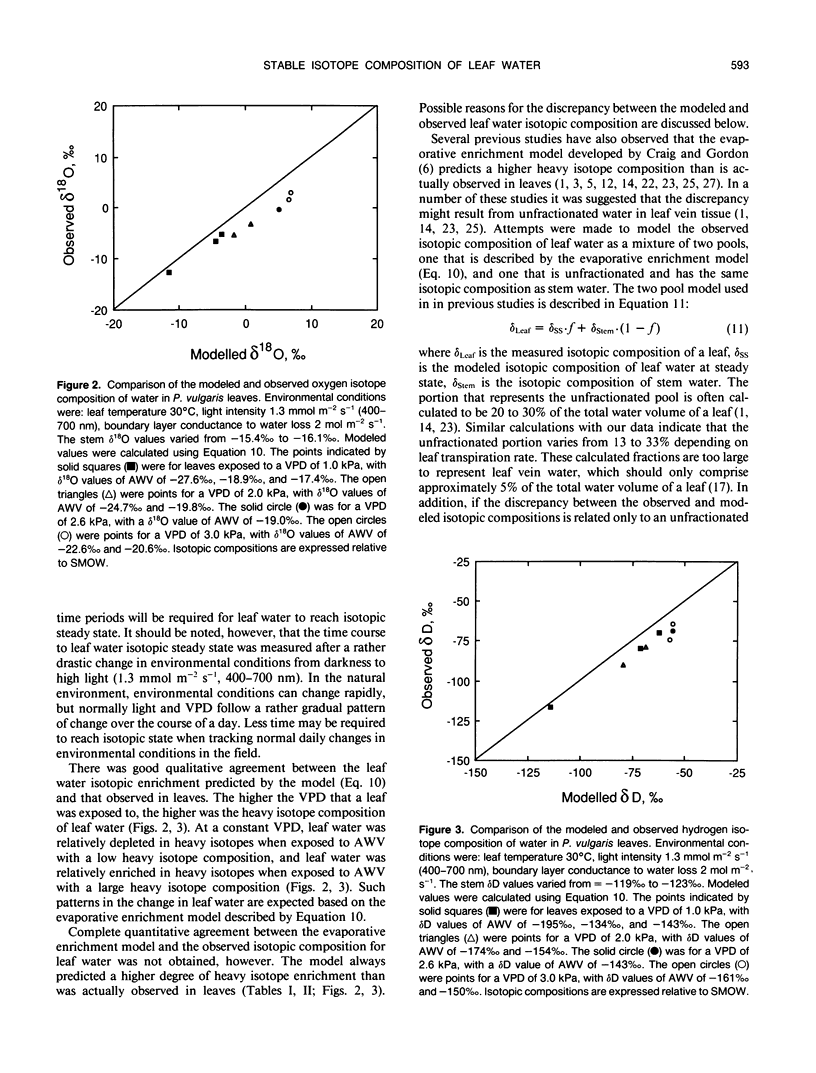
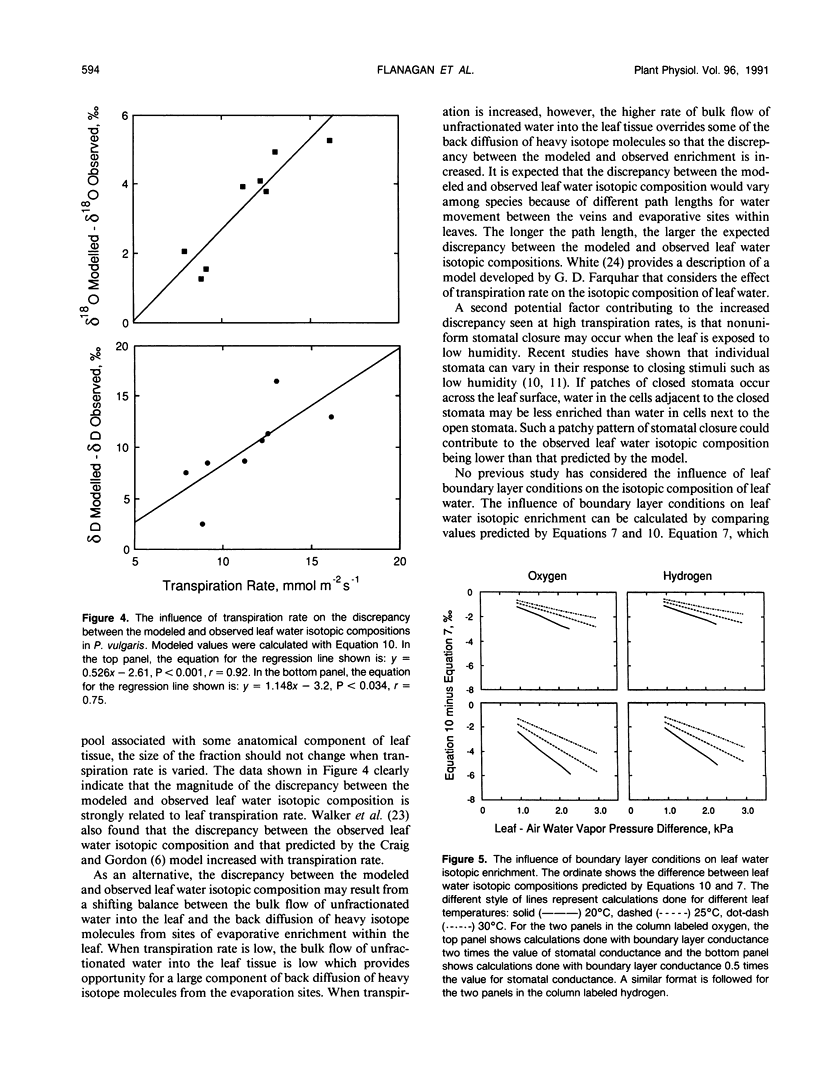
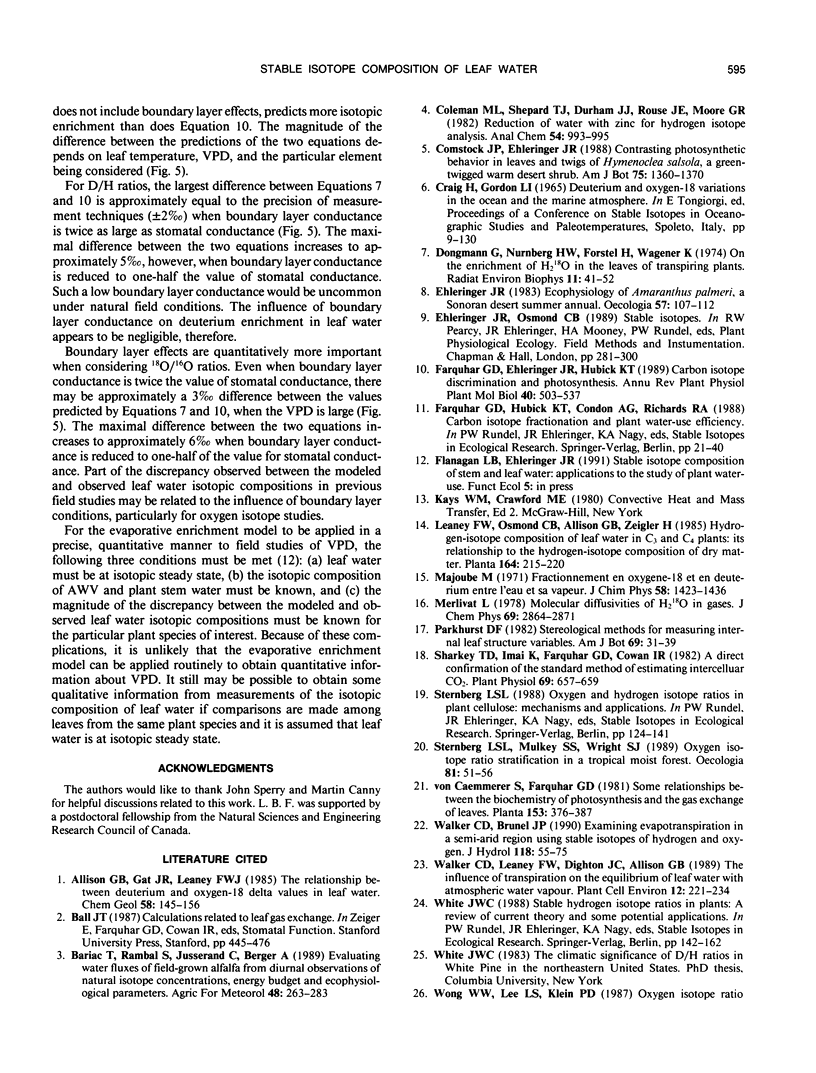

Selected References
These references are in PubMed. This may not be the complete list of references from this article.
- Dongmann G., Nürnberg H. W., Förstel H., Wagener K. On the enrichment of H2 18-O in the leaves of transpiring plants. Radiat Environ Biophys. 1974 Mar 29;11(1):41–52. doi: 10.1007/BF01323099. [DOI] [PubMed] [Google Scholar]
- Sharkey T. D., Imai K., Farquhar G. D., Cowan I. R. A Direct Confirmation of the Standard Method of Estimating Intercellular Partial Pressure of CO(2). Plant Physiol. 1982 Mar;69(3):657–659. doi: 10.1104/pp.69.3.657. [DOI] [PMC free article] [PubMed] [Google Scholar]
- Wong W. W., Lee L. S., Klein P. D. Oxygen isotope ratio measurements on carbon dioxide generated by reaction of microliter quantities of biological fluids with guanidine hydrochloride. Anal Chem. 1987 Mar 1;59(5):690–693. doi: 10.1021/ac00132a002. [DOI] [PubMed] [Google Scholar]
- Zundel G., Miekeley W., Grisi B. M., Förstel H. The H2(18O) enrichment of the leaf water of tropic trees: comparison of species from the tropical rain forest and the semi-arid region in Brazil. Radiat Environ Biophys. 1978 Aug 10;15(2):203–212. doi: 10.1007/BF01323265. [DOI] [PubMed] [Google Scholar]


